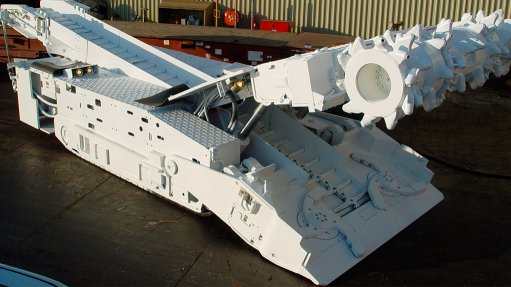
AGE OF MACHINES Mining is becoming more dependent on machines and computers, therefore miners are having to up their their game
It is imperative that South African mines adopt mechanisation to improve their operational efficiencies and remain sustainable businesses entities, says University of the Witwatersrand Centre for Mechanised Mining Systems (CMMS) director Dr Declan Vogt.
Vogt, who gave a keynote address at the Council for Geoscience’s recent 2016 conference, in Tshwane, noted that fewer than 30% of platinum mines had a cost of production that was lower than the market price of the metal in 2015.
He also pointed out that 30% of South Africa’s platinum was produced by mechanised underground mines, with an additional 9% being produced by platinum mining company Anglo American Platinum’s Mogalakwena opencast mine, in Limpopo.
“Most of the profitable platinum mining operations in South Africa are mechanised. Therefore, the message is very clear: mines must mechanise or perish,” Vogt asserted.
He added that the situation in the gold sector was similar, as most gold mines were running at a loss.
Further, Vogt stressed that safety standards at local mines had to be improved. “Something radical needs to be done, which gold miners agree is the case. Mechanisation offers the solution, as it enables mines to remove workers from dangerous areas and prevent harm coming to their employees.”
He averred that, as mining became more dependent on machines and computers, miners were having to up their game.
“As a key part of the mining process, the lives of geologists are also going to change, as more is going to be required by them; but they will also have better tools and more data available to them to carry out their work,” Vogt stated.
He said that mechanisation led to concentrated mining, with fewer faces that could be advanced faster than was ever possible previously.
“Future machines will acquire geological information such as lithology and structure directly through photography or remote sensing. The availability of dense geological data will also greatly improve interpretations by geologists,” Vogt remarked.
He stressed that there also needed to be a major cultural transformation in the workforce, whereby the goal of ensuring safer, more productive mining operations was achieved.
He said that, once a mine adopted a level of automation, the issue of coordination became critically important.
“There is a close relationship between the pieces of equipment at work and the fast pace of operations. This means that problems need to be diagnosed and solved very quickly, or substantial production will be lost,” Vogt stated.
He elaborated that a key challenge for the mining sector was the legacy of workers and managers in a conservative industry. Vogt said that moving them towards a culture in which mechanisation would work best had to be achieved as a matter of necessity.
He noted that the CMMS followed “a systems approach” to mining, which included people, processes and technology, to act as a connector between mining companies and equipment suppliers.
Vogt commented that mines often did not fully comprehend the inherent mining challenges at hand.
“With our unique combination of mining, mechanical and industrial engineering skills, the CMMS can assist in bridging this gap,” he contended.
Vogt said that the centre had a “proven record” of generating various options during prefeasibility studies that had the potential to turn a lossmaking operation into a profitable one by thinking laterally about the challenge.
He added the CMMS also researched issues that were shared by the mining industry and its suppliers, such as skills development challenges.